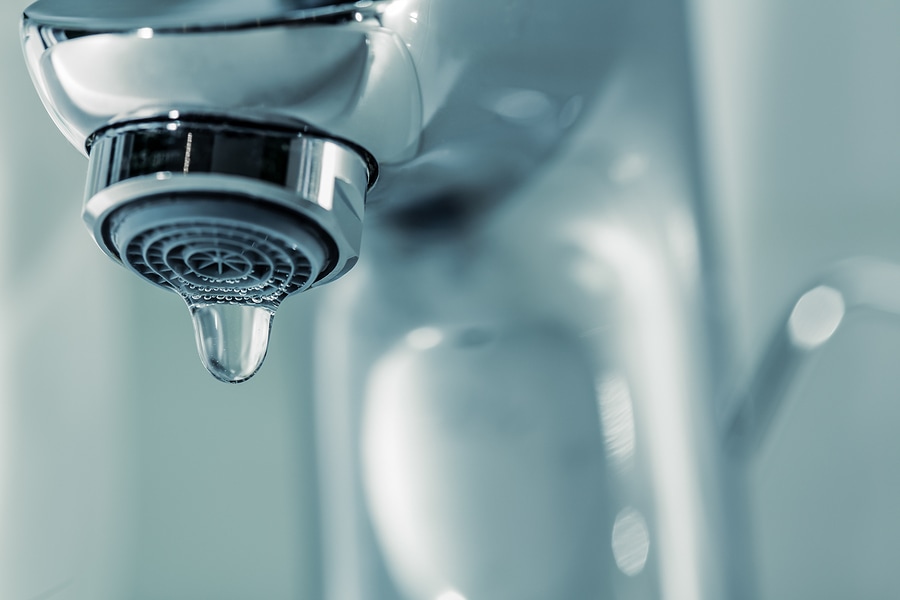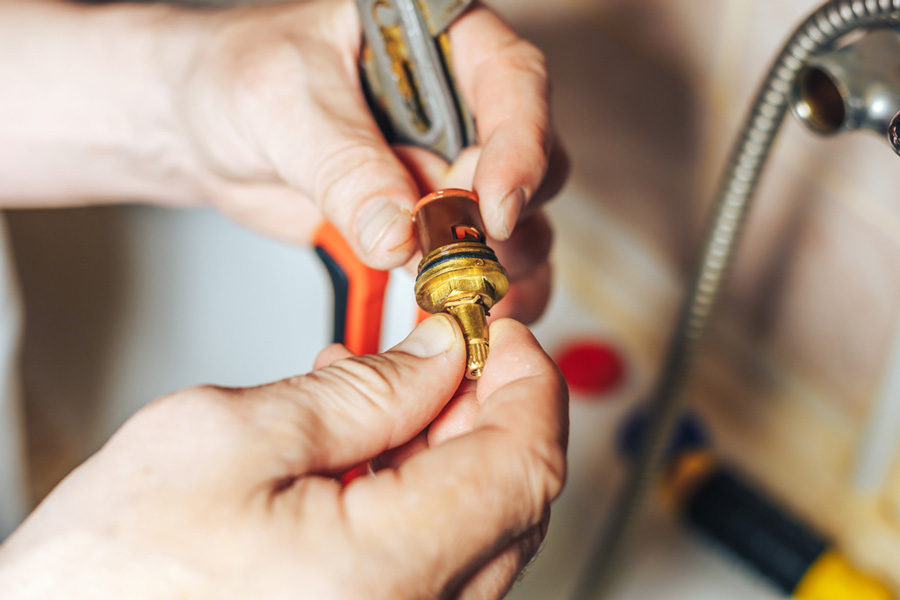We have noticed this post involving What Causes Leaky Faucets & How To Fix Them listed below on the internet and reckoned it made good sense to write about it with you over here.

Leaking faucets may feel like a small inconvenience, but their impact goes beyond simply the annoyance of the sound. From wasting water to sustaining unneeded economic prices and wellness threats, overlooking a trickling tap can cause different repercussions. In this short article, we'll delve into why it's essential to resolve this common house concern immediately and efficiently.
Wastage of Water
Ecological Effect
Trickling faucets contribute dramatically to water waste. According to the Environmental Protection Agency (EPA), a solitary faucet trickling at one drip per second can squander more than 3,000 gallons of water per year. This not just stress water resources yet additionally impacts communities and wild animals based on them.
Step-by-Step Guide to Taking Care Of a Dripping Faucet
Devices Required
Prior to attempting to repair a trickling faucet, collect the essential tools, including a flexible wrench, screwdrivers, replacement parts (such as washing machines or cartridges), and plumber's tape.
Common Faucet Issues and Their Solutions
Recognize the sort of faucet and the certain concern causing the drip. Common issues consist of damaged washing machines, corroded valve seats, or damaged O-rings. Describe manufacturer instructions or on the internet tutorials for step-by-step support on repair services.
Financial Expenses
Boosted Water Costs
Past the ecological effect, leaking taps can pump up water expenses significantly. The collected waste gradually equates into greater energy costs, which might have been avoided with prompt fixings.
Prospective Property Damages
Additionally, prolonged trickling can cause damage to components and surfaces bordering the faucet. Water accumulation can trigger staining, rust, and also structural problems if left unattended, causing additional repair service costs.
Health and wellness Concerns
Mold and Mold Development
The constant existence of dampness from a dripping faucet develops a perfect atmosphere for mold and mildew and mold development. These fungi not only endanger interior air quality but likewise present health and wellness risks, particularly for people with respiratory system problems or allergic reactions.
Waterborne Illness
Stagnant water in leaking faucets can end up being a breeding place for bacteria and other microorganisms, boosting the danger of waterborne illness. Contaminants such as Legionella bacteria thrive in stationary water, possibly causing major illnesses when consumed or breathed in.
Do it yourself vs. Professional Repair
Pros and Cons of Do It Yourself Repair Work
While some might attempt to fix a trickling faucet themselves, do it yourself repair work feature their own collection of challenges. Without proper understanding and tools, DIY efforts can exacerbate the problem or bring about incomplete repair services, prolonging the problem.
Advantages of Working With a Professional Plumber
Employing an expert plumber makes certain that the underlying cause of the trickling tap is addressed efficiently. Plumbing technicians have the expertise and equipment to diagnose and repair faucet problems effectively, conserving time and lessening the danger of additional damages.
Ecological Obligation
Specific Payment to Preservation
Taking duty for taking care of leaking faucets aligns with broader efforts towards water preservation and environmental sustainability. Every individual's activities jointly make a considerable impact on maintaining valuable resources.
Lasting Living Practices
By focusing on timely repairs and taking on water-saving routines, individuals add to sustainable living techniques that benefit both existing and future generations.
Preventive Measures
Normal Maintenance Tips
To stop leaking taps, carry out regular maintenance such as cleansing aerators, examining for leakages, and replacing worn-out components promptly. Furthermore, consider setting up water-saving gadgets or updating to much more effective components.
Importance of Prompt Repair Works
Resolving trickling faucets as soon as they're discovered stops further water wastefulness and potential damages, inevitably conserving both water and cash in the long run.
Impact on Property Value
Perception of Well-Maintained Home
Preserving a building in good condition, consisting of resolving upkeep problems like dripping faucets, boosts its regarded value and value amongst possible purchasers or renters.
Influence on Resale Worth
Qualities with well-kept plumbing fixtures, consisting of faucets, command greater resale values in the property market. Attending to dripping faucets can add to a positive perception during building evaluations and arrangements.
Final thought
Resolving a dripping tap goes beyond simple ease; it's an important action towards conserving water, minimizing economic costs, and guarding health and home. Whether via do it yourself repairs or professional support, acting to take care of trickling taps is a tiny yet impactful means to advertise liable stewardship of sources and add to a much healthier, more sustainable future.
How to Fix a Leaky Faucet: Step-by-Step Repair Guide
A leaky faucet may seem like a simple annoyance, but if it's not fixed promptly, that leak could cost hundreds to potentially thousands. From water damage to mold, mildew, and high water bills, even a tiny leak can be catastrophic if left unattended. Damage like this can even affect the overall value of your home, so it's important to take the right approach for leaky faucet repair. You may need the help of a plumber in some cases, but we've got a few tips you can try on how to fix a leaky faucet before calling the pros.
Four Faucet Types
When you're learning how to fix a leaky faucet, the first step is knowing what kind of faucet you're working with! There are four common types.
Cartridge Faucets
Cartridge faucets come in one- or two-handled varieties. In one-handled cartridge faucets, hot and cold water combines in a single cartridge. In the two-handled versions, hot and cold water are controlled separately and mixed in the faucet.
Ball Faucets
Ball faucets have a single lever you push up and down to adjust the pressure and rotate to change the temperature. A slotted metal ball controls the amount of water allowed into the spout.
Compression Washer Faucets
They're the oldest type of faucet, but they're still used in many homes — especially older ones. Compression faucets have two separate handles that, when turned, raise or lower the washer that seals a water valve. This valve stops water from flowing through the faucet when it is turned off.
Disc Faucets
Disc faucets rarely need to be repaired due to their maintenance-free design. The water flow is controlled by two discs — the upper one raises and lowers against a fixed lower disc, creating a watertight seal. If your disc faucet starts leaking, you may need to replace the seals or clean residue buildup from the inlets.
Fixing a Leaky Faucet
Step 1: Turn Off the Water
Whether you're learning how to fix a leaky bathtub faucet or how to fix a leaky kitchen faucet, always turn off the water supply to your working area when you're fixing a leak. The last thing you want is a flood added to your list of things to fix.
Look for the shutoff valves below your sink or around the tub and turn them clockwise to stop the water flow. If your faucet doesn't have shutoff valves, you may need to turn off the water for the whole house. Check to make sure it's off by turning the faucet on. If nothing comes out, you're ready to start the repair.
Step 2: Take Apart the Faucet
How you disassemble your faucet depends on the type of fixture you have. You can use a flathead screwdriver to remove the caps on top of the handle or handles for cartridge and compression faucets. Inside, you should see handle screws. Unscrew these with a screwdriver to remove the handle.
Disc- and ball-style faucets will typically have an inlet screw near the handle, and removing that will reveal the interior of the faucet.
Detach the Valve Stem
For cartridge- and compression-style faucets, you'll see the inner valve stem or cartridge once you remove the faucet handles. If you have a compression faucet, unscrew the brass valve stem. If you have a cartridge faucet, pull out the cartridge. If your cartridge has been in place for a while, it may require some tools or extra force to remove it due to mineral deposits.
Examine and Replace Parts
Once you've removed the parts, check them out to confirm what needs to be replaced. You may see corroded rubber washers, O-rings, stems, or cartridges. On a ball-style faucet, check the seats and springs for damage.
If you need to repair a leaky disc faucet, check the inlet and seals on the lower disc.
Once you determine what parts must be replaced, visit your local hardware store. Bring the damaged parts with you to ensure you can purchase the correct components to replace them.
Clean Valves and Faucet Cavity
If you've removed a stem or cartridge, you may notice mineral buildup in the faucet's threads. Use white vinegar to clean the valve seat by soaking it for a few minutes, then scrub it away with a soft toothbrush and rinse with warm water. You can also clean the interior of the faucet in the same way.
Reassemble the Faucet
Once your faucet is cleaned and the required parts have been replaced, it's time to reassemble it. Put the pieces back together and slowly turn the water supply back on. Doing this slowly is crucial because too much initial water pressure can damage the new hardware you've just installed.
https://homewarranty.firstam.com/blog/how-to-fix-leaky-faucet

Do you like more info about ? Create a remark further down. We'd be pleased to hear your thoughts about this article. We are looking forward to see you back again later on. Sharing is caring. One never knows, you may be helping someone out. Thanks for going through it.
Comments on “When It's Mandatory to Correct a Malfunctioning Faucet”